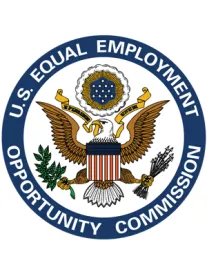On August 29, 2016, the Equal Employment Opportunity Commission (EEOC) issued its final “Enforcement Guidance on Retaliation and Related Issues,” which replaced the Agency’s nearly-20-year-old 1998 Compliance Manual, Section 8: Retaliation. As the title clearly implies, the guidance primarily sets forth the Agency’s evolving interpretations of the law of retaliation. It also focuses on the related “interference” provisions of the Americans with Disabilities Act (ADA), however, which comprise “coercion, threats, intimidation, or interference with respect to ADA rights.”
The EEOC chose to address these issues in the wake of numerous judicial opinions related to retaliation claims, including seven United States Supreme Court Cases[1], based largely on the fact that retaliation is asserted in nearly 45 percent of all charges received by the EEOC—by far the highest among EEOC claims. Accordingly, the Agency’s stated goal of this guidance is “assisting all employers reduce the likelihood of retaliation.” It attempts to do so by, among other things, outlining its analyses of the law and providing concrete examples of retaliatory situations.
The guidance addresses retaliation under statutes enforced by EEOC, including Title VII of the Civil Rights Act of 1964 (Title VII), the Age Discrimination in Employment Act (ADEA), Title V of the Americans with Disabilities Act (ADA), Section 501 of the Rehabilitation Act (Rehabilitation Act), the Equal Pay Act (EPA) and Title II of the Genetic Information Nondiscrimination Act (GINA). More specifically, the topics addressed include:
-
Elements of a retaliation claim and the scope of employee activity protected by the law;
-
Legal analysis to be used to determine if evidence supports a claim of retaliation;
-
Remedies available for retaliation;
-
Rules against interference with the exercise of rights under the ADA;
-
Detailed examples of employer actions that may constitute retaliation; and
-
“Promising Practices” by employers, including written EEO policies and procedures.
This extensive guidance is intended for use by both employers and the Agency, including EEOC investigators, litigators, and adjudicators.
For further guidance materials from the EEOC related to this topic, see EEOC Retaliation Q&A and EEOC Small Business Retaliation Fact Sheet.
[1] Supreme Court decisions handed down after issuance of the EEOC’s 1998 Compliance Manual that concern retaliation under EEOC-enforced laws include: University of Texas Southwestern Medical Center v. Nassar, 133 S. Ct. 2517 (2013); Kasten v. Saint-Gobain Performance Plastics Corp., 563 U.S. 1 (2011); Thompson v. North American Stainless, LP, 562 U.S. 170 (2011); Crawford v. Metropolitan Government of Nashville & Davidson County, 555 U.S. 271 (2009); Gomez-Perez v. Potter, 553 U.S. 474 (2008); Burlington Northern & Santa Fe Railway Co. v. White, 548 U.S. 53 (2006); and Clark County School District v. Breeden, 532 U.S. 268 (2001).




 />i
/>i


